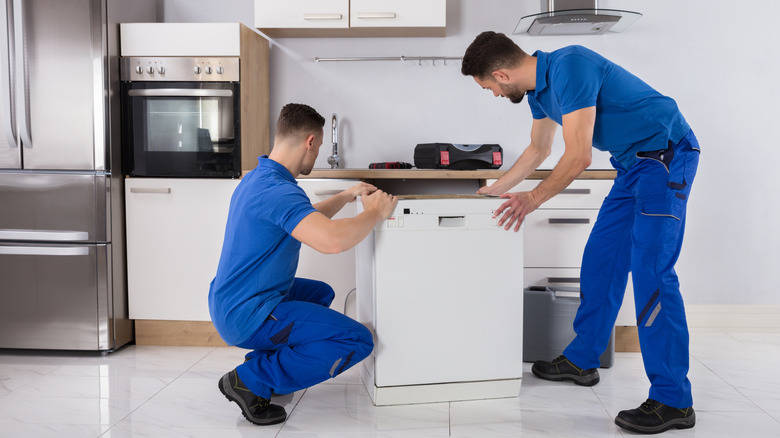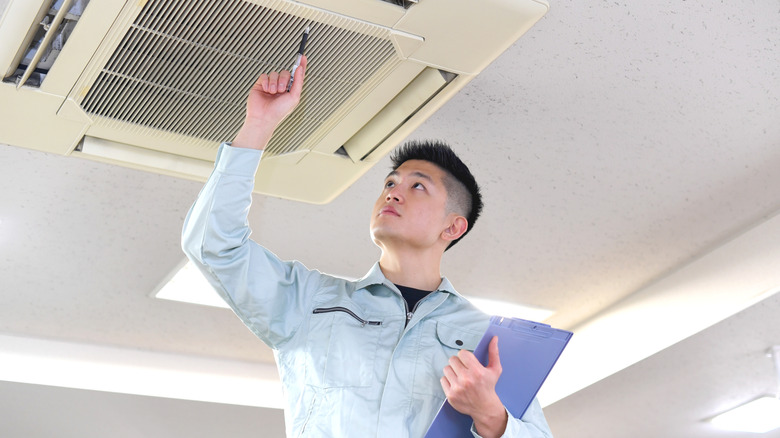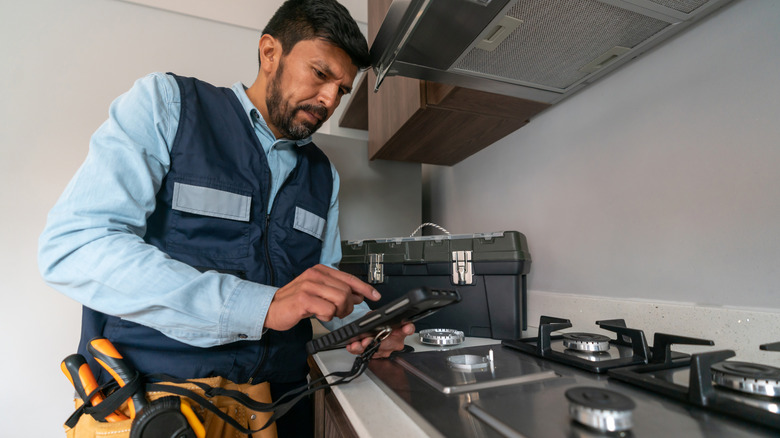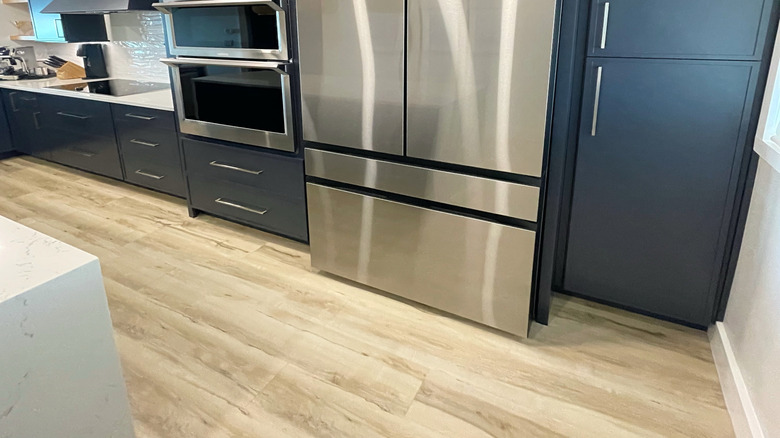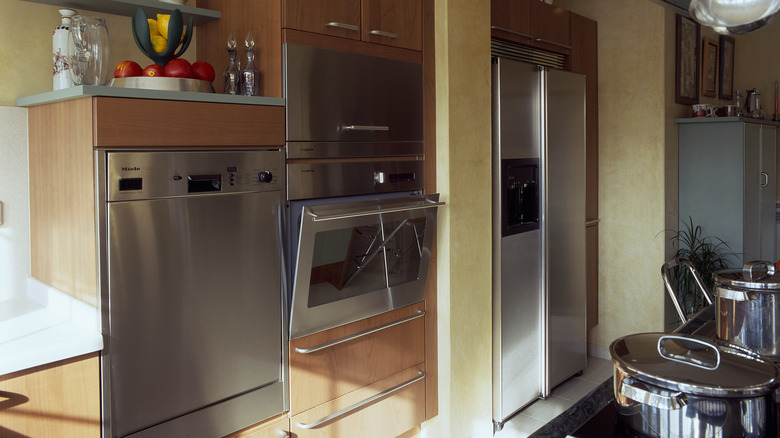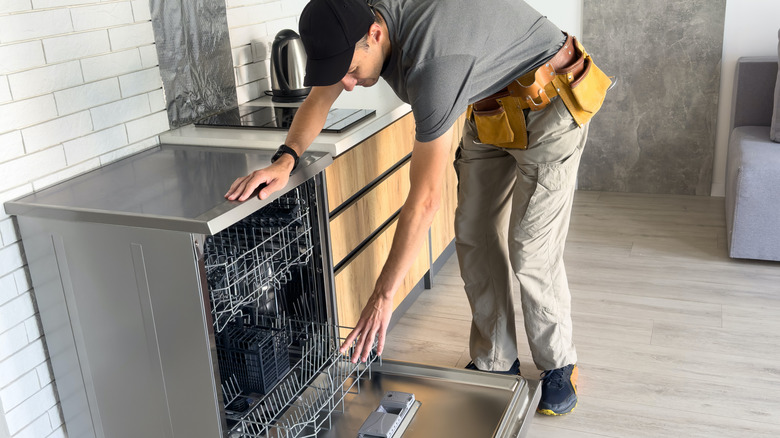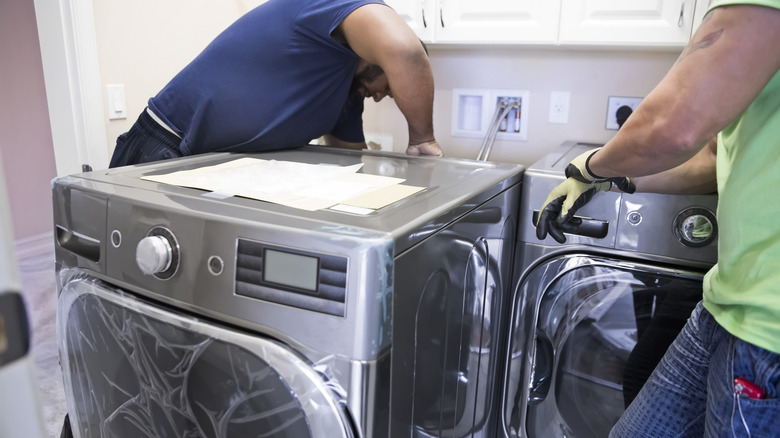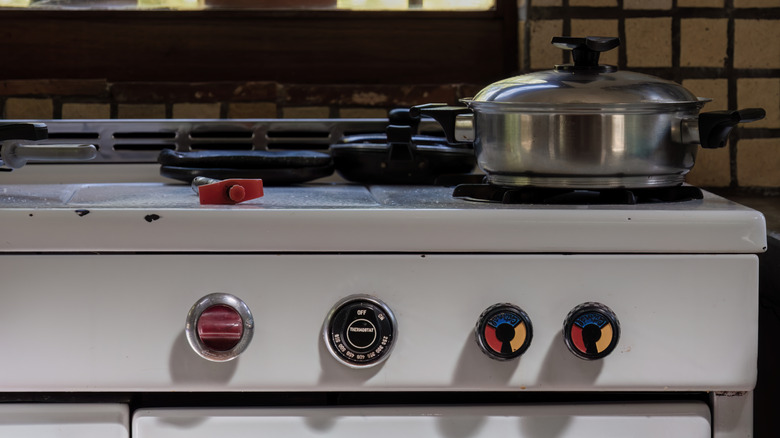Mistakes Everyone Makes When Buying & Installing Home Appliances That You Should Avoid
The excitement of buying a new appliance can quickly fade when you realize the fridge door swings the wrong way or your fancy new oven needs a special outlet you don't have. Oversights and miscalculations can lead to costly returns or modifications, and ultimately delay the enjoyment of new appliances.
Many consumers tend to focus on aesthetics and price tags without considering essential factors like noise levels, maintenance costs, and long-term energy consumption. This can result in selecting appliances that don't fit your needs or your home, wasting time, money, and effort. One study highlighted that 76% of homeowners who experienced appliance malfunctions found that their issues were not covered by a warranty or protection plan, despite 90% being offered such plans at the time of purchase.
Installation can also become a challenge when electrical or plumbing requirements are ignored. Some appliances need special power sources or additional connections, which can mean unexpected expenses and delays. Without proper planning, what should be a simple upgrade can quickly turn into a costly and time-consuming project.
Let's break down the most common mistakes people make when buying and installing their new home appliances. By being informed and prepared, you can avoid unnecessary expenses and ensure a smooth transition to your new equipment.
Skipping space and clearance measurements
Failing to account for critical measurements often results in awkward placement, restricted functionality, or costly modifications. For instance, refrigerators require additional clearance for proper airflow and to ensure doors can open fully without obstruction. Many modern refrigerators, especially the high-tech refrigerators, feature larger dimensions due to added technology, which can easily be overlooked when planning for space. Similarly, ovens need adequate clearance to prevent heat damage to surrounding cabinetry, and dishwashers must fit snugly without interfering with adjacent fixtures.
Beyond the designated space, it's crucial to measure delivery pathways, including hallways, staircases, and entryways. A surprising number of homeowners face issues when their appliance doesn't make it through the front door. Consulting standard fixture dimensions helps ensure appliances will fit not only in their intended spot but also during transit.
To avoid costly mistakes, always measure twice and leave at least an inch of clearance for proper airflow and easy access. Taking the time to plan ensures that your appliance fits seamlessly into your home, both aesthetically and functionally, preventing last-minute headaches.
Ignoring noise levels
Dishwashers, washing machines, and HVAC systems can produce disruptive sounds that impact daily living, especially in open-concept homes or small apartments. A dishwasher might seem quiet in a showroom, but in a real home setting, it could turn into an unwelcome background hum during family dinners or late-night cleaning cycles.
Noise levels are measured in decibels (dB), and understanding these ratings can help buyers make informed decisions. For example, dishwashers rated under 40 dB are considered ultra-quiet, making them ideal for shared living spaces or homes with young children. Anything above 50 dB might become noticeable, potentially disrupting conversations or relaxation. Common noise level charts can serve as a helpful guide when comparing appliances.
Ignoring this detail often leads to buyer's remorse, with some realizing too late that their new washing machine drowns out their favorite TV show or that their refrigerator hums persistently through the night. Manufacturers are increasingly focusing on quieter designs, and understanding what counts as a quiet appliance can save buyers from unwanted surprises.
When shopping for appliances, consider where they'll be placed and how noise might affect your household's daily routine. Paying attention to decibel ratings upfront can lead to a quieter, more comfortable home environment.
Overlooking electrical and gas requirements
Ignoring electrical and gas requirements is one of the most common mistakes homeowners make when purchasing appliances. In fact, electrical issues account for nearly 24,200 residential fires annually, according to the U.S. Fire Administration, often caused by overloaded circuits and improper appliance installations. High-powered appliances like ovens, dryers, and water heaters frequently require dedicated circuits or upgraded wiring to operate safely and efficiently. Without prior assessment, homeowners may face unexpected expenses for electrical upgrades or, worse, serious safety risks.
Gas appliances come with their own set of challenges, requiring proper ventilation and secure hookups to prevent hazardous leaks and carbon monoxide buildup. Choosing between gas and electric appliances isn't just about personal preference — it affects long-term energy consumption and operational costs. Understanding the differences between gas and electric home appliances can help buyers determine which option best suits their home infrastructure.
Before making a purchase, evaluate your home's electrical panel capacity or gas line compatibility. Consulting a professional can prevent installation mishaps, costly delays, and safety concerns, and ultimately ensure your new appliance functions as intended.
Ignoring energy ffficiency ratings
Many homeowners focus solely on the upfront cost of appliances, overlooking how energy efficiency can significantly impact long-term expenses. According to the U.S. Department of Energy, households can save up to $220 over a 12-year period by choosing an ENERGY STAR-certified refrigerator. Despite this, energy ratings often take a back seat to aesthetics and features, leading to higher utility bills and a larger carbon footprint.
Modern appliances come with energy efficiency labels that provide clear insights into their expected energy consumption. Refrigerators, washing machines, and HVAC systems, in particular, can account for a significant portion of household electricity use. Choosing inefficient models may mean unknowingly increasing annual energy costs by hundreds of dollars.
Beyond cost savings, the most energy-efficient home appliances contribute to a more sustainable home. They reduce greenhouse gas emissions and align with evolving energy regulations that prioritize environmental responsibility. Homeowners who ignore these ratings may find themselves facing regulatory compliance issues in the future, as efficiency standards continue to tighten.
Paying attention to efficiency ratings ensures a balance between initial investment and long-term savings, helping homeowners make smart, eco-friendly decisions without sacrificing performance.
Falling for oversized appliances
Bigger isn't always better. Many homeowners fall into the trap of purchasing oversized appliances assuming they offer better performance and value. However, an appliance that's too large for your space can lead to inefficient energy use, wasted storage, and a clunky aesthetic that disrupts your home's flow. Choosing the right size appliance is about physical space, practicality, and functionality.
Oversized refrigerators can dominate a kitchen, and they require more energy to maintain optimal cooling. Meanwhile, large washing machines might seem appealing for their capacity, but they can waste water and electricity if they're consistently underloaded. And when it comes to televisions, factors like viewing distance and screen size must align for an optimal experience.
Larger appliances often require special wiring, ventilation, and reinforcement that many homeowners don't anticipate, leading to unexpected costs and potential structural changes to accommodate them.
Before making a purchase, it's important to assess your household's specific needs, available space, and energy efficiency goals. Opting for appropriately sized appliances ensures better performance, easier maintenance, and a more harmonious fit in your living space.
Choosing based on looks alone
An appliance that looks great in the showroom may not necessarily perform well in your home or suit your practical needs. One of the biggest drawbacks of prioritizing style over substance is overlooking essential features like energy efficiency, durability, and functionality. For instance, a refrigerator with a stylish glass front may look impressive but could lack the storage flexibility needed for a busy household. Similarly, trendy color choices might not age well, potentially clashing with future home updates. Investing in the most reliable home appliance brands ensures longevity and performance, regardless of the exterior finish.
This is not just about performance alone, selecting appliances based on appearance can also lead to impractical installations. Some modern designs have unique dimensions or require specific clearances that might not fit standard kitchen layouts. High-end finishes also often require specialized cleaning methods to maintain their appearance, adding to long-term maintenance costs and efforts.
When choosing appliances, it's essential to strike a balance between style and function. Consider factors such as capacity, energy consumption, and ease of use alongside design preferences.
Rushing installation
Excitement often takes over when a new appliance arrives, leading to the common mistake of rushing the installation process. Whether it's a dishwasher, washing machine, or oven, improper setup can lead to inefficiencies, damage, and even safety hazards. Skipping key steps or ignoring manufacturer instructions might void warranties, increase energy consumption, and result in costly repairs down the line.
One of the biggest risks of a hasty installation is electrical and plumbing errors. Appliances that require specific power configurations or water connections can be prone to leaks, short circuits, or power failures if not properly set up. For instance, installing a washing machine without securing the drainage hose correctly can lead to water damage, while incorrect wiring for high-power appliances like ovens can pose serious fire risks. Attempting complex installations without the necessary expertise can be risky, which is why experts recommend leaving complicated setups to professionals rather than resorting to DIY electrical solutions.
Moreover, rushing installation often results in improper leveling and alignment, which can cause operational issues. A refrigerator that isn't level may not cool efficiently, while an unbalanced washing machine can lead to excessive noise and vibration. Taking the time to carefully follow installation guidelines ensures optimal performance and extends the lifespan of your appliances. To avoid these pitfalls, it's essential to allocate enough time for installation, carefully read the instruction manuals, and seek professional assistance when necessary.
Skipping the fine print on warranties
Many appliance buyers make the mistake of assuming their warranty covers everything, only to face unexpected repair costs down the line. Warranties often come with specific terms and conditions that, if overlooked, can lead to frustration when appliances break down. Coverage limitations, exclusions, and maintenance requirements are commonly buried in the fine print, catching consumers off guard when they need service the most.
Some manufacturers require registration within a specific timeframe to activate coverage, yet many buyers neglect this step, leaving them without protection when something goes wrong. In fact, research from the University of Michigan found that 16% of consumers fail to register their products, potentially forfeiting their warranty benefits entirely, while 29% seldom register.
Another common issue is misunderstanding what is covered under standard versus extended warranties. Standard warranties often cover only manufacturer defects, while wear and tear, accidental damage, and installation-related issues are excluded. Many consumers purchase extended warranties without fully understanding what they entail, leading to duplicate coverage or unnecessary costs.
To avoid warranty-related surprises, it's crucial to read and understand the terms before making a purchase. Pay attention to coverage details, the claims process, and any maintenance obligations required to keep the warranty valid. Keeping proof of purchase, following usage guidelines, and registering the product promptly can ensure hassle-free service should the appliance require repairs.
Not accounting for maintenance costs
Appliances like refrigerators, washing machines, and HVAC systems require regular upkeep to ensure they function efficiently and last their intended lifespan. Failing to account for these ongoing costs can lead to unexpected financial strain and premature breakdowns.
Routine maintenance tasks such as replacing filters, cleaning condenser coils, and descaling water lines might seem minor, but they add up over time. The average cost of appliance repair can range between $108 and $250 per service. However, neglecting these essential services often leads to higher energy consumption and more costly repairs that could have been avoided with regular maintenance.
Some appliances also require more regular maintenance than others. Front-loading washing machines need frequent gasket cleaning to prevent mold buildup. Ice-making refrigerators need regular water filter replacements to maintain performance and water quality. Ignoring these kinds of maintenance needs can reduce efficiency, and even void warranties if the manufacturer's service guidelines are not followed.
Checking out the upkeep requirements before purchasing can help ensure that you're prepared for the responsibilities that come with it. Setting aside a small annual budget for maintenance and repairs can keep appliances running smoothly and extend their longevity.
Neglecting to research installation requirements
Installing a new appliance might seem as simple as plugging it in and turning it on, but it is often far more complicated. Whether it's a matter of ensuring the right electrical outlets, plumbing connections, or proper venting, skipping steps can lead to delays, unexpected costs, and even damage to the appliance, turning an exciting purchase into an expensive headache.
Appliances like dishwashers and dryers often require specialized installation components that aren't included in the box. Missing essential accessories like hoses, power cords, or mounting brackets can mean multiple trips to the hardware store or worse, an incomplete installation that affects the appliance's performance. A simple way to avoid these issues is by thoroughly reviewing the manufacturer's installation guide and confirming with the retailer if additional parts are needed.
For those considering DIY installation, it's essential to have the right tools and knowledge to ensure a safe and functional setup. The importance of using quality tools cannot be overstated. Having the right equipment can make all the difference. Without proper planning and preparation, DIY attempts can result in misaligned fixtures, faulty wiring, or even safety hazards.
Consulting a professional for complex setups like built-in ovens or gas appliances can save time, money, and frustration, ensuring your new appliance is set up for optimal performance from day one.
Failing to plan for future needs
Most people buy appliances based on what they need right now, without thinking about how their needs might evolve. Over time, families grow, technology advances, and energy efficiency standards shift. Without considering the future, you might end up replacing appliances sooner than expected, leading to unnecessary expenses and frustration.
What works for a single person or a couple today might not cut it in a few years. That compact fridge that seemed perfect could quickly feel too small as grocery habits change or a family expands. The same goes for washers and dryers; smaller units may struggle to keep up with increased laundry demands down the line.
Technology is another factor. More appliances are now designed to work with smart home systems, offering features like remote monitoring and energy usage tracking. Choosing non-smart appliances today might mean missing out on efficiency and convenience later. Smart home appliances can help optimize energy consumption and provide greater control over household operations.
When shopping for new appliances, it's important to think beyond immediate needs. Look for models with flexible features, expandable storage, or compatibility with smart home technology. Planning ahead ensures your appliances won't just fit your current lifestyle but will adapt as things change, saving you money and headaches in the long run.
